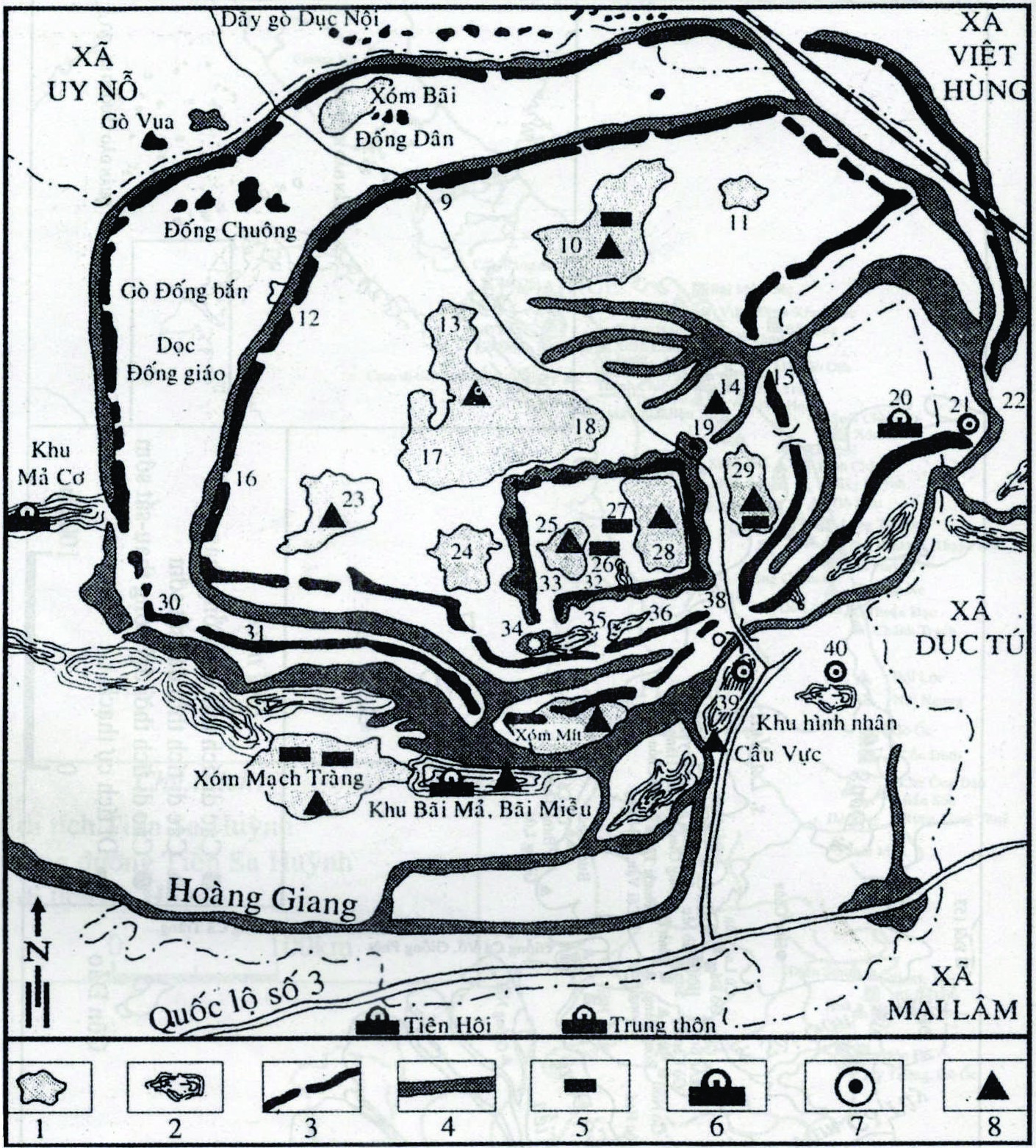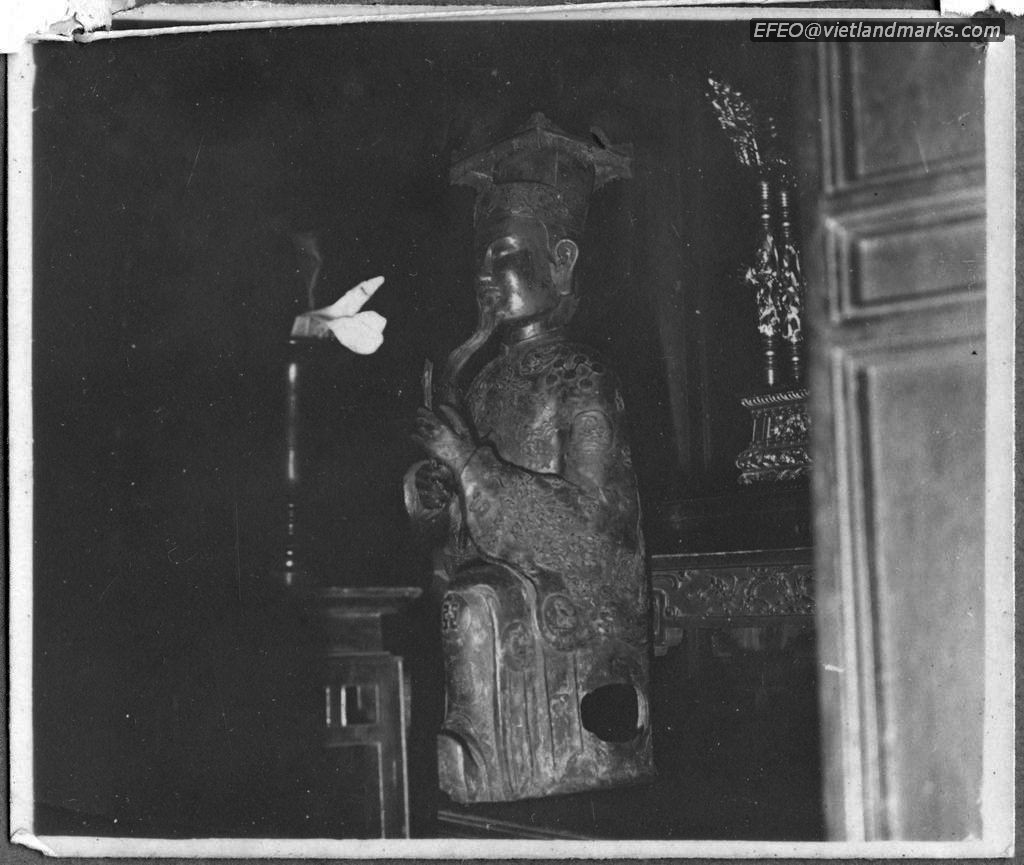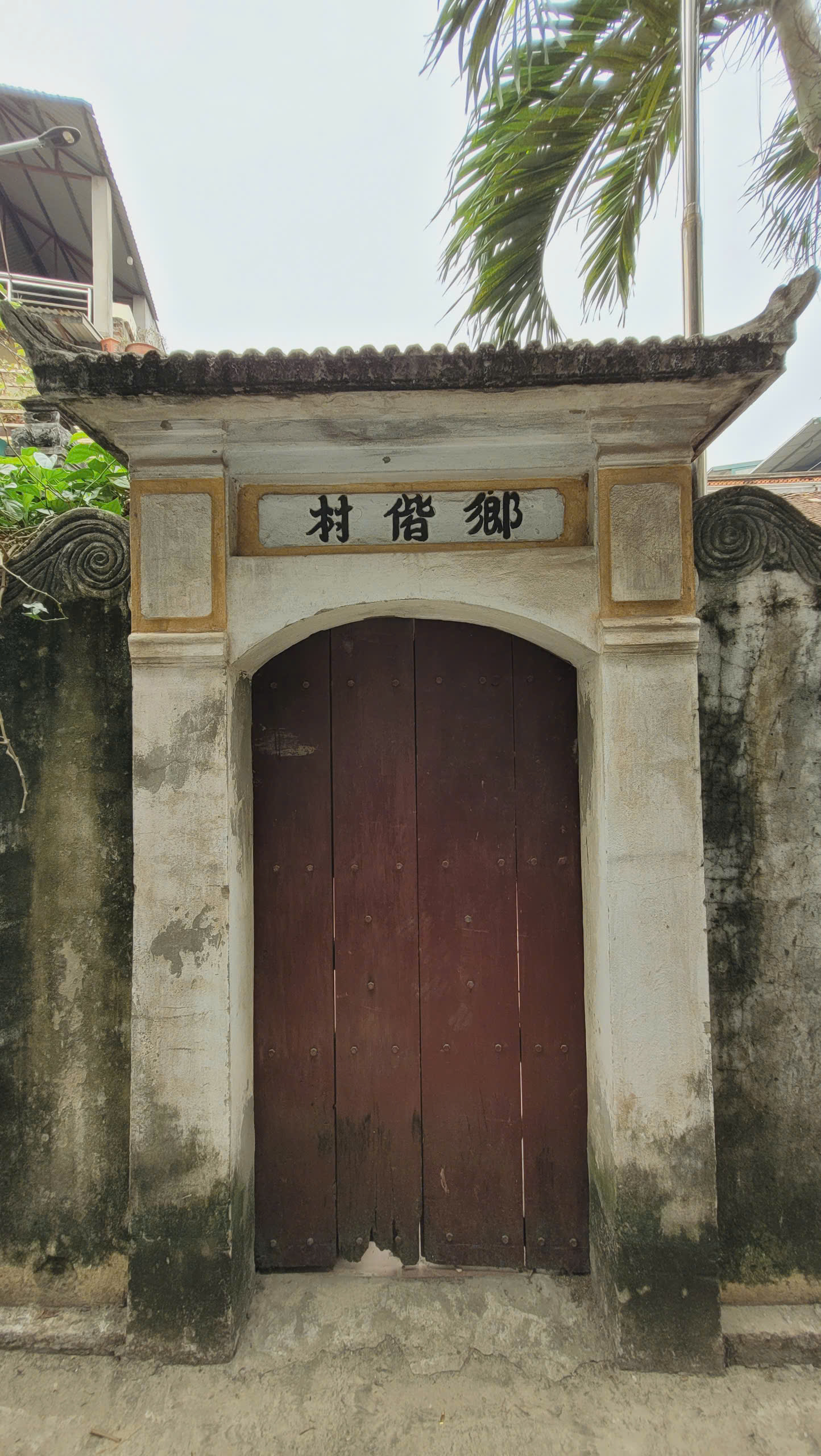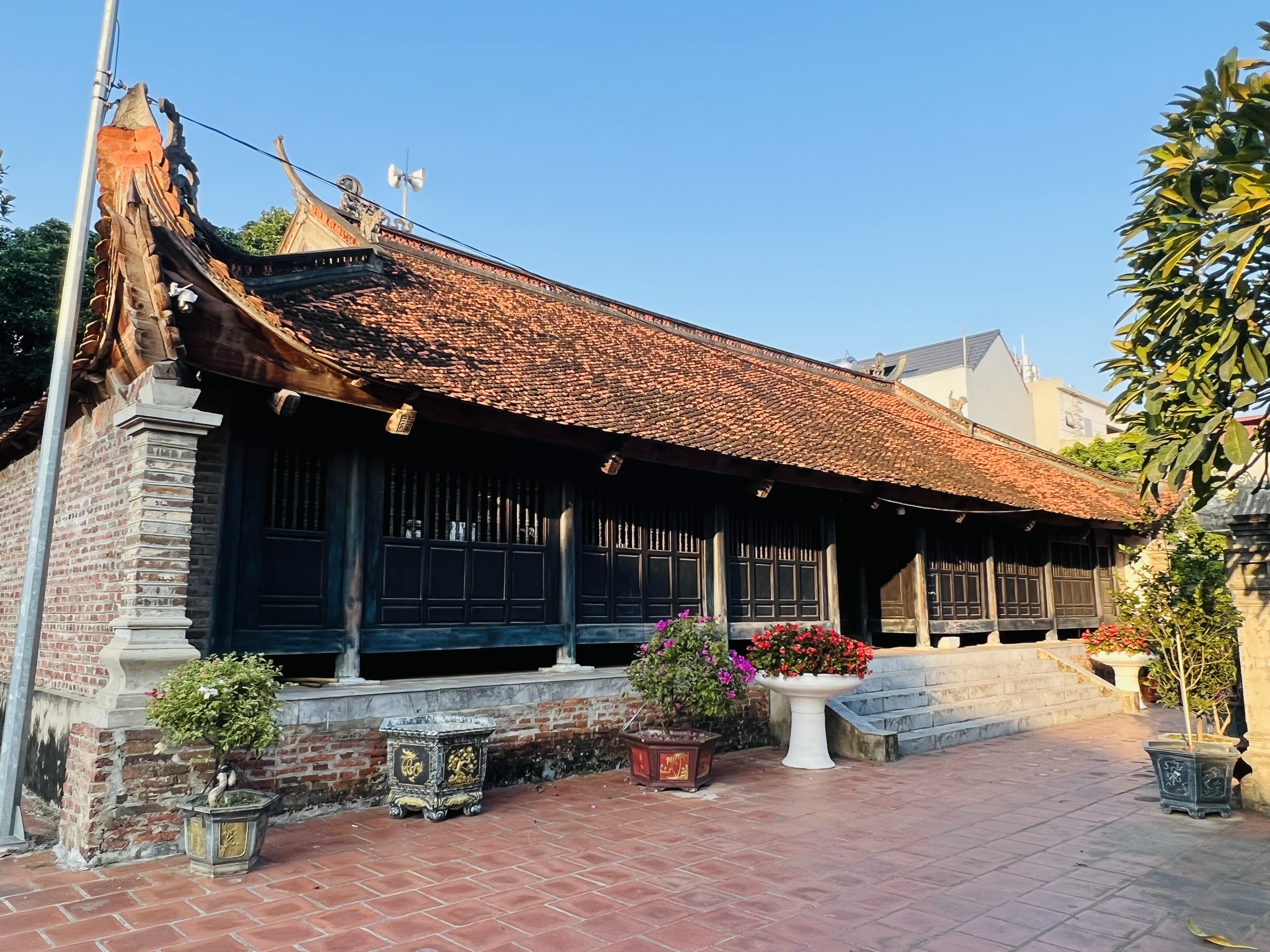Co Loa is currently one of 24 communes and towns of Dong Anh district, Hanoi city. Dong Anh district was established in the 29th year of Tu Duc (1876) on the basis of Co Loa, Tuan Le and Xuan Canh communes of Dong Ngan district, Tu Son prefecture; 3/10 communes of Phuong La commune (formerly Huong La) of Yen Phong district, Tu Son prefecture; Dong Do commune and 5/14 communes of Phu Lo commune of Kim Anh district (formerly Kim Hoa), Thien Phuc prefecture (formerly Bac Ha), all of which belong to Bac Ninh province. Co Loa area now belongs to Dong Ngan district. Thus, Co Loa originally belonged to Dong Ngan district before the establishment of Dong Anh district, Tu Son prefecture, Bac Ninh province.
Several thousand years ago, along the Hoang Giang River, settled villages appeared. Each village was called a “Cha”. Co Loa at that time was called “Chu village”, “Ke Chu” or “Cha Chu”. When Co Nhue was called “Ke Noi”, Hoang Mai was called “Ke Mo”, Tu Liem was called “Ke Chem”, Yen Lang was called “Ke Lang”, then Co Loa was called “Ke Chu”. The book An Nam chi luoc of the Tran Dynasty (1333) called Co Loa Kha Lu. And, later, if Ke Chu of Binh Luc (Ha Nam) was called Ngoc Lu, Ke Chu (Co Loa) was called “Trang Kim Lu”.
During the reign of Trieu (Da), Co Loa belonged to Phong Khe district, Giao Chi district. After defeating An Duong Vuong (179 BC), Trieu Da stationed troops for a while in the citadel to organize the governance of Au Lac land. Imitating the Qin and Han dynasties, he divided Au Lac country into districts (there were 2 districts of Giao Chi in the North and Cuu Chau: Thanh Nghe Tinh) and annexed Au Lac to the map of Nam Viet. Co Loa was located in the territory of Tay Vu district of Giao Chi district.
In 137 BC, Trieu Da died, his nephew Trieu Ho succeeded to the throne as King of Nam Viet. In 111 BC, the Han Dynasty destroyed Nam Viet. From then on, Au Lac was transferred from the Trieu Dynasty to the Han Dynasty. The Han Dynasty took the land of Viet and divided it into 9 districts: Nam Hai, Thuong Ngo, Uat Lam, Hop Pho, Giao Chi, Cuu Chan, Nhat Nam, Chau Nhai, and Dam Nhi.
In the year 43, when Ma Vien led troops to suppress the Trung Vuong, the citadel became a base against the invaders. After overthrowing the Trung Vuong regime - which was still in its infancy, drowning the uprising of our people in a pool of blood, Ma Vien reported to the king: "Tay Vu district has 33,000 households, please divide into two districts Phong Khe and Vong Hai. The Han emperor agreed". The old citadel of An Duong Vuong from now on lies within the borders of Phong Khe district (legend says that Ga hamlet - Co Loa commune in the past was Phong Khe camp).
By the end of the 6th century - the beginning of the 7th century, under the Early Ly Dynasty, Ly Nam De defeated the governor Tieu Tu of the Tang Dynasty and gained independence. Ly Nam De established his capital in Long Bien, then moved to Vu Ninh (Que Vo - Ha Bac), ceding the western strip of land to Ly Phat Tu. Ly Phat Tu established his capital in the old citadel of the Vietnamese king - that is, Co Loa citadel. To deal with the invasion plot of the feudal Tuy Dynasty, Ly Phat Tu ordered the renovation of Co Loa citadel as the main base, protecting the independence for 32 years. In 602, it was invaded and occupied by the feudal Tuy Dynasty and then the Tang Dynasty. Co Loa at that time belonged to Phong Chau district.
After nearly a thousand years of persistent struggle against the domination and assimilation of the Northern feudalism, our people under the leadership of Ngo Quyen brought the country permanently free from the domination of the Northern feudalism in 938. From here, national independence was restored. To show his intention to continue the "old national tradition" of An Duong Vuong - the founder of Au Lac, Ngo Quyen decided to establish the capital in Co Loa citadel. Co Loa citadel once again became the political center of the whole country in the early days of autonomy.
In the 10th century, after the "Ngo dynasty was dispersed", Co Loa lost its position as "national capital" and became Kim Lu village (from the 11th to the 15th century) in Dong Ngan district.
During the Tran and early Le dynasties, Co Loa changed from Kim Lu village to Co Loa village, Yen Phong district - Tu Son prefecture - Kinh Bac town (region). At that time, Co Loa commune was one of the "eight communes" of Co Loa canton, structured in the style of "one commune, one village", under the commune was a hamlet (there was no village like other communes), including 9 hamlets: Chua hamlet, Cho hamlet, Dong hamlet (Dong Tren and Dong Duoi), Nhoi Tren hamlet (Vien Loi Thuong), Nhoi Duoi hamlet (Vien Loi Ha), Vang hamlet, Thuong hamlet, Huong hamlet, Ga hamlet.
By 1704, Mit hamlet, Vang hamlet camp and Bai hamlet were merged into Co Loa. Around the time of the Mac dynasty, Lan Tri hamlet was established. Thus, after the Mac dynasty, Co Loa commune included 11 hamlets (as listed above, plus 2 hamlets: Mit hamlet and Lan Tri hamlet).
During the Nguyen Dynasty, Co Loa was one of eight communes of Co Loa canton, Dong Ngan district - Tu Son prefecture - Kinh Bac town (region). In 1832, with the reform of King Minh Mang, Kinh Bac region changed its name to Bac Ninh province.
According to the book Vietnamese Village Names in the first half of the 19th century, at the end of the Le Dynasty and the beginning of the Nguyen Dynasty: "Co Loa Commune belongs to Dong Ngan District, Tu Son Prefecture, Kinh Bac Province. Co Loa Commune has 8 communes: Co Loa, Thu Cuu village of Luong Quan Commune, Duong An, Lo Giao, Luong Quy, Duc Noi, Gia Loc, Luong Quan (now belonging to Co Loa Commune are the two communes of Co Loa and Thu Cuu).
Xuan Canh commune belongs to Dong Ngan district, Tu Son prefecture, Kinh Bac region. Xuan Canh commune has 11 communes and villages: Xuan Canh, Uy No Thuong, Cau Ky village of Uy No Thuong commune, Van Loc, Van Thuong village of Luc Canh commune, Quan village of Luc Canh commune, Mach Trang, Cat Lai village of Phuc Loc commune, Lai Nghia village of Phuc Loc commune, Xuan Trach, Kinh No (now in Co Loa commune, there is Cau Ky village - later changed to Cau Ca and Mach Trang village).
In Dong Khanh Geography, there are records about the administrative units of Co Loa canton as follows:
“Co Loa General, 8 communes and villages:
1. Co Loa Commune
2. Lo Giao Commune
3. Luong Quy Commune
4. Duong An Commune
5. Gia Loc Commune
6. Duc Noi Commune
7. Luong Quan Commune
8. Thu Cuu Village, Luong Quan Commune”
Thus, compared with the current administrative unit of Co Loa commune, we see:
1. Co Loa Village (Cha Chu) is an independent commune of Co Loa canton, including 11 hamlets.
2. Thu Cuu village is an independent village of Luong Quan commune (including 2 villages: Luong Quan and Thu Cuu). In the early 19th century, it was upgraded to an independent commune.
3. Cau Ca village (or Cau Ki) is an independent village of Uy No Thuong commune, Xuan Canh canton.
4. San Da village (or San village) is a hamlet in Van Loc commune, Xuan Canh canton.
5. Mach Trang village (or Mach Duong) is an independent commune of Xuan Canh commune.
The above villages all belong to Dong Ngan district - Tu Son prefecture - Bac Ninh province. In the 29th year of Tu Duc (1876), Co Loa commune and two communes of Tuan Le and Xuan Canh were separated from Dong Ngan district, along with some communes of two districts of Kim Anh and Yen Phong to establish Dong Anh district, under Tu Son prefecture, Bac Ninh province.
Around the first year of Thanh Thai reign (1889), Dong Anh district was renamed Dong Khe district. On April 10, 1903, it returned to its old name, Dong Anh. From October 1901, Dong Anh district belonged to the newly established Phu Lo province. In February 1904, this province was renamed Phuc Yen province. From March 1913, it was renamed Phuc Yen Agency, Phuc Yen province. In March 1923, it returned to its original name, Phuc Yen province.
After the success of the August Revolution, the above villages established their own provisional People's Committees. After the election of the People's Council at the commune level in January 1946, the above villages merged into a commune named Thuc Vuong in Dong Anh district - Phuc Yen province.
On June 17, 1949, the Administrative Resistance Committee of Inter-Zone I issued Decision 361 PC/1 to merge Thuc Vuong commune with Dat Tam commune, Cau Ca and Dai Bi villages of Uy Son commune into Hong Lac commune. This commune includes the following villages:
1. Co Loa
2. Cau Ca
3. Mach Trang
4. Luc Canh
5. Van Thuong
6. Van Loc
7. Xuan Canh
8. Xuan Trach
9. Dai Bi
10. Thu Cuu
On November 10, 1949, the Administrative Resistance Committee of Inter-Zone I issued Decision No. 968 PC/2 to change the name of Hong Lac commune to Doc Lap commune. Since 1950, Co Loa commune, Dong Anh district, belonged to Vinh Phuc province.
After the land reform (1954), Doc Lap commune changed its name to Quyet Tam commune, including the villages: Co Loa, Cau Ca, Dai Bi, Mach Trang, San Da, Thu Cuu.
On April 20, 1960, the 2nd National Assembly, 2nd session, issued a Resolution on the expansion of Hanoi city. To implement this resolution, on May 31, 1961, the Government Council issued Decision 78/CP on the organization of administrative units of the capital Hanoi. Accordingly, Quyet Tam commune and 22 other communes of Dong Anh district were transferred to Hanoi.
In 1965, Doc Lap commune changed its name to Co Loa commune, including 6 villages (as above). In 1974, according to Decision No. 23 - BT of the Minister of the Prime Minister's Office (March 11, 1974), Dai Bi village separated from Co Loa commune and merged into Uy No commune.
Since 1974 until now, Co Loa commune has included 5 villages:
1. Co Loa village (including 11 hamlets)
2. Thu Cuu
3. Cau Ca
4. Mach Trang
5. San Gia
Thus, after more than 60 years, the population of the 5 villages has increased significantly and due to management requirements in new conditions, the hamlets of Co Loa village were upgraded to a village, some hamlets were merged with other hamlets or villages to form a village (such as: Thuong hamlet + Thu Cuu village + Bai hamlet forming a hamlet-level administrative unit called Thuong - Cuu - Bai area, or commonly called Thuong hamlet). In addition, the newly formed residential cluster in Co Loa market also became a management unit like a village called Cau Sa Market area. In summary, Co Loa commune today has 15 hamlets/hamlets with the following names (ancient and modern names):
Statistical table of village names in Co Loa commune
MANAGEMENT DEPARTMENT OF CỔ LOA VESTIGE SITE








